Just like their records, the Australian rockers’ road gear is eclectic and adventurous, ready to cover ground from metal to microtonal Turkish psychedelia.
You could throw a dart at a board of all the world’s music genres, and chances are fair that you’d hit a sound that Melbourne band King Gizzard and the Lizard Wizard have explored. King Gizz started life as a bluesy garage-rock outfit, but over the past 14 years, they’ve leapt into metal, jazz, folk, electronic, and even microtonal music. They’ve spread their adventures over 26 LPs—five of them released in 2022 alone.
On tour this summer in support of their latest, Flight b741, the band stopped at Nashville’s Ascend Amphitheater, where Premier Guitar’s Chris Kies caught up with guitarists Joey Walker and Stu Mackenzie for a look at how they navigate the Gizzverse onstage. Here’s a preview of some of the goods, but tune into the full Rundown to catch all the details—including Mackenzie’s famed Flying Microtonal Banana, the namesake of their 2017 album.
Brought to you by D’Addario.Turkish Delight
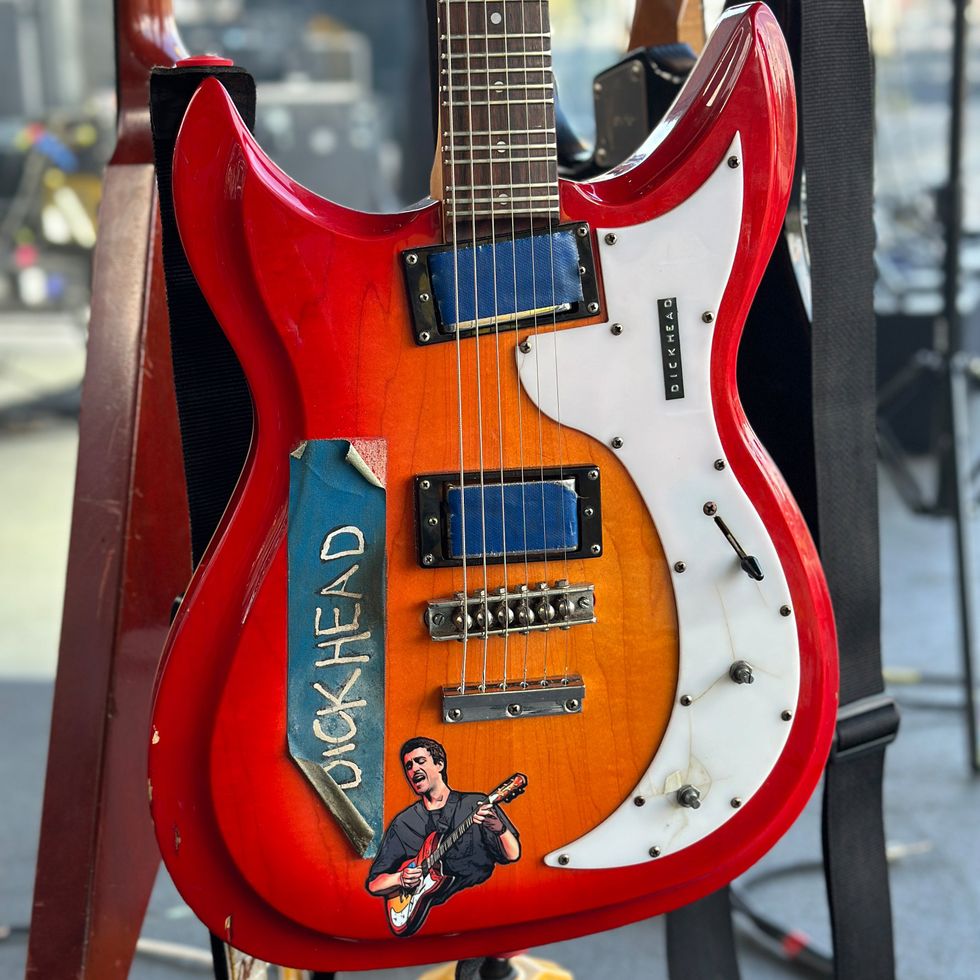
Walker’s Godin Richmond Dorchester has been subjected to a few changes. When King Gizzard entered their “microtonal phase,” influenced by Mackenzie’s travels to Turkey, the guitar was modified by a luthier friend with a fret arrangement (identical to Mackenzie’s Flying Banana) that permits microtonal intervals, like a Turkish bağlama. Walker explains that it’s like adding extra frets between the traditional 12 notes, so there are quarter-tone intervals rather than just semitone steps. It took some learning to figure out how to play, but at this point it feels like muscle memory for Walker.
The Jammer
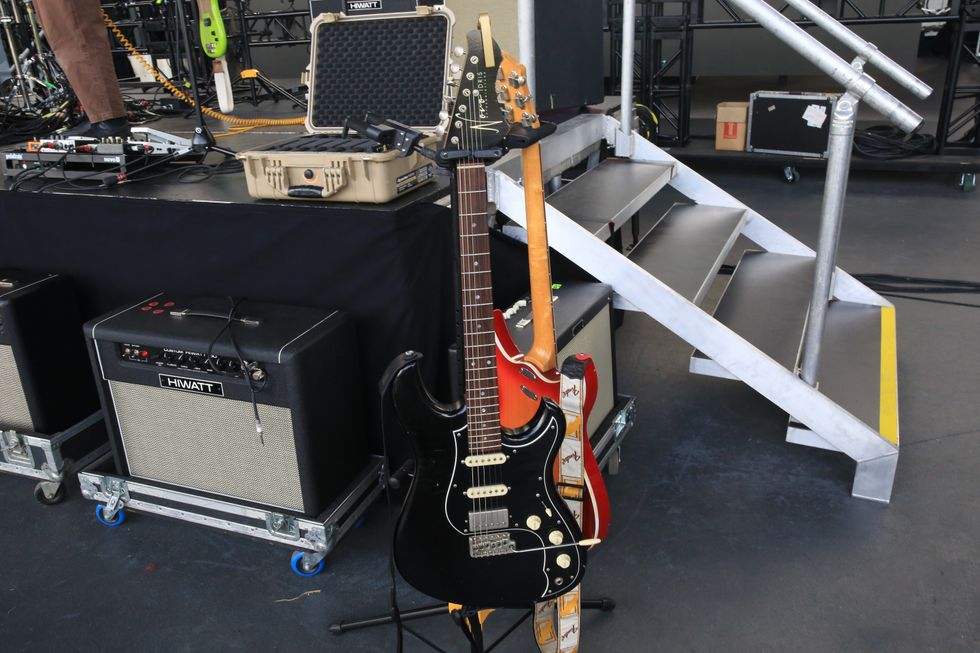
This H-S-S Novo Idris does the heavy lifting for Joey Walker playing deep into King Gizzard's expansive, extended sets.
Samurai Sword
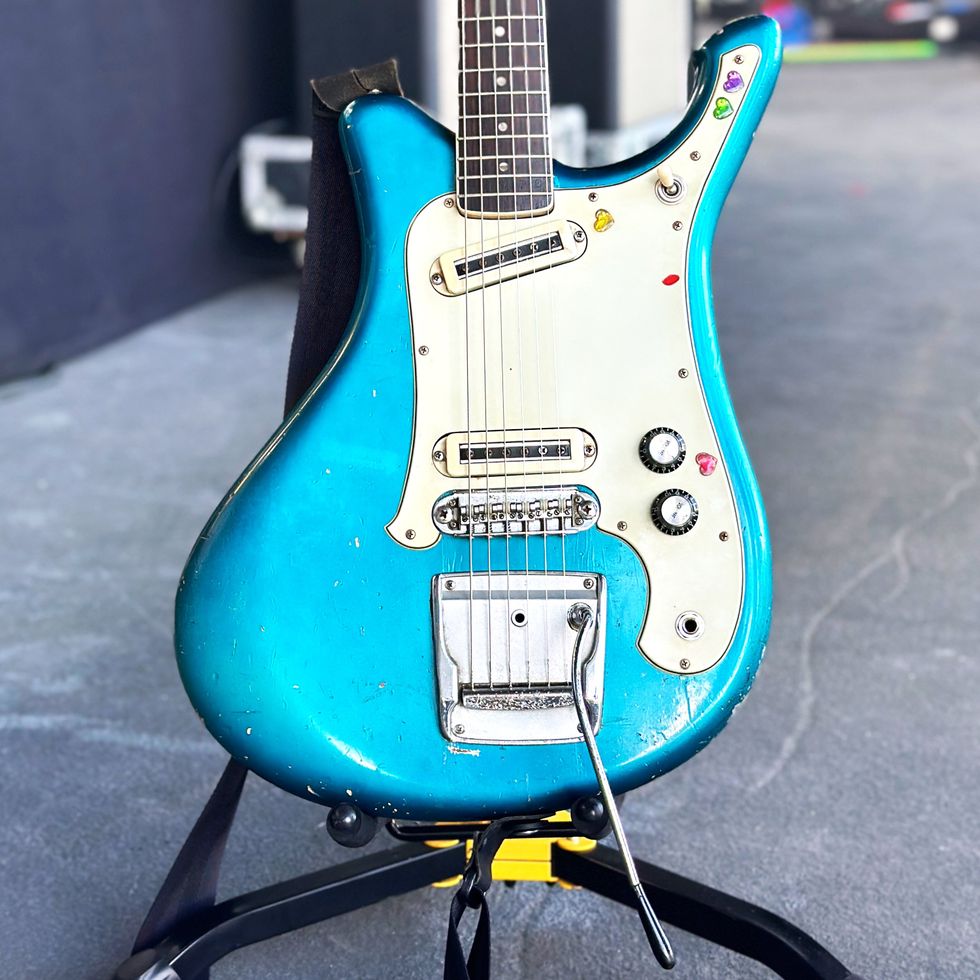
Mackenzie admits that he’s not picky with his guitars: He likes unpredictable gear, and he’s prone to impulse-buying weirdo axes. He picked up this Yamaha SG-2 in 2013, and it sounds like no other guitar he’s played. The weird, noisy pickups cause interesting microphonic glitches, and while it’s a bit of a pain to keep in proper playing order, Mackenzie knows his way around the guitar and trusts it. The SG-2 is strung with .011s and handles standard-tuning numbers.
Stu Mackenzie's Pedalboard and Amp

While Mackenzie’s guitar selections are rather offbeat, his pedalboard and amp setup are fairly straight-laced; in fact, 70 percent of the set is played with no effects on at all. His signal runs first into a Boss TU-3 tuner and DD-3T delay, then to a Devi Ever Aenima, a Jam Pedals Boomster, a Fender Tread-Light Wah, and a Dunlop Volume (X) Mini. His vocals run into a custom multi-effect pedal by EarthQuaker Devices, which features both overdrive and a gated echo, preventing ambient noise from triggering the effect. A VVco Pedals Time Box helps Mackenzie keep the set from running over.
From the board, his signal runs to a Fender Hot Rod Deluxe, an amp he can pick up virtually anywhere in the world. He runs it fairly clean, but adjusts it between every song for varied gain-staging. A Mesa Boogie PowerHouse Attenuator keeps the stage volume in check.
Hefty Hitters
Joey Walker uses two different Hiwatt combos — a Custom 50 and T20/10 MkIII — that both serve a purpose during the Gizzverse throwdown. The bigger Custom 50 is EQ'd for clean tones, while the smaller T20/10 MkIII is goosed with gas for gained-up tones.
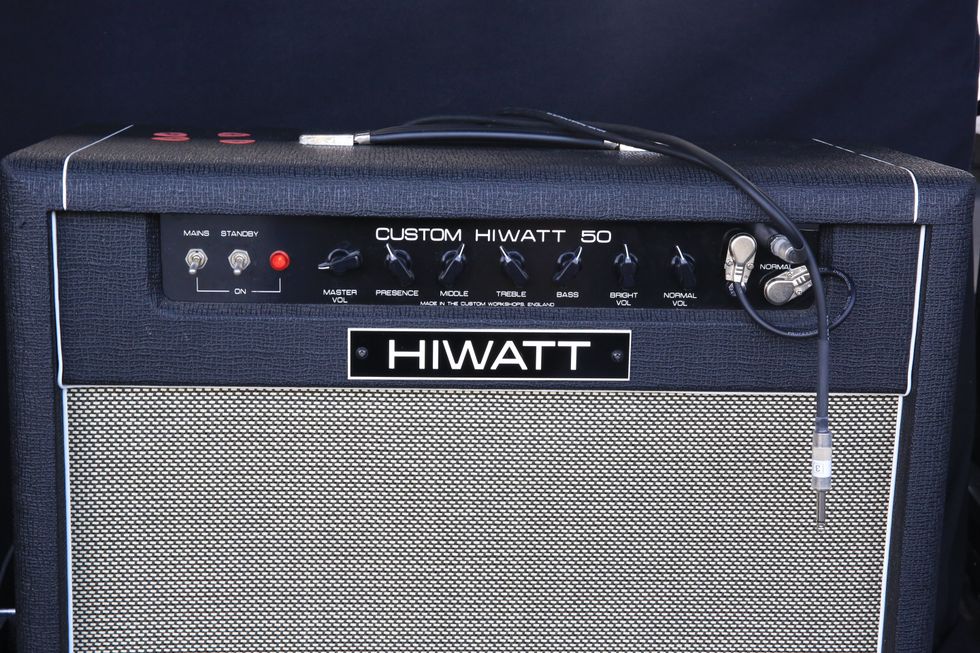

Joey Walker's Pedalboard
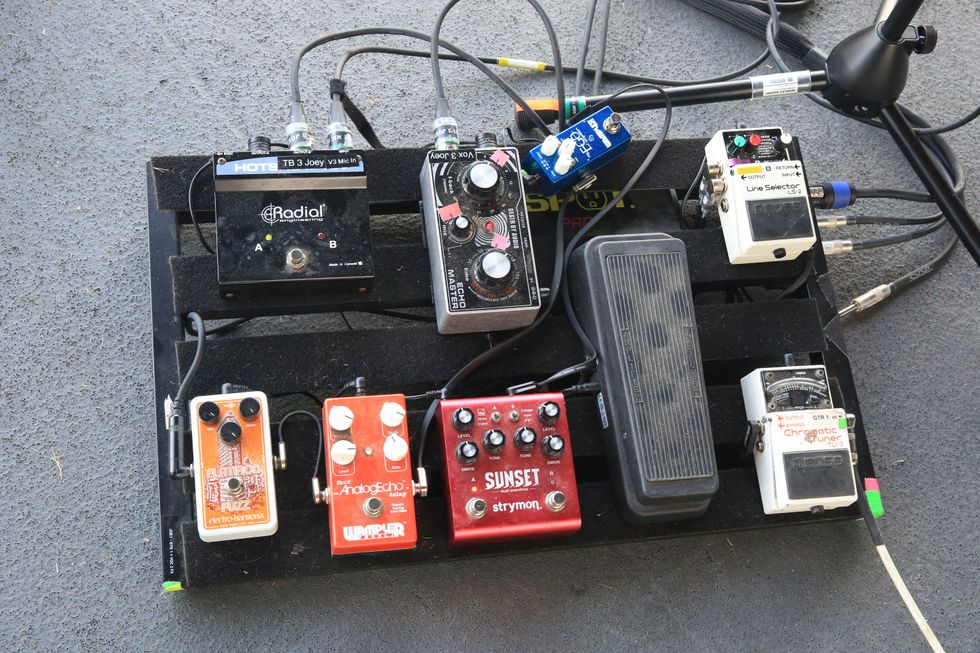
The guitarist's stomp station is surprisingly sparse for the melody and mite that swirls in a King Gizz performance. He has five key signal sizzlers: an Electro-Harmonix Flat Iron (fuzz), Wampler Faux Analog Echo (delay), Strymon Sunset (overdrive), Dunlop Cry Baby (wah), and Wampler Mini Ego (compressor). He uses a Death By Audio Echo Master for his vocals, a Boss LS-2 Line Selector & Radial Engineering HotShot to handle amp & mic switches, and the Boss TU-3 Chromatic Tuner keeps his instruments in check.





![Devon Eisenbarger [Katy Perry] Rig Rundown](https://www.premierguitar.com/media-library/youtube.jpg?id=61774583&width=1245&height=700&quality=70&coordinates=0%2C0%2C0%2C0)
























































